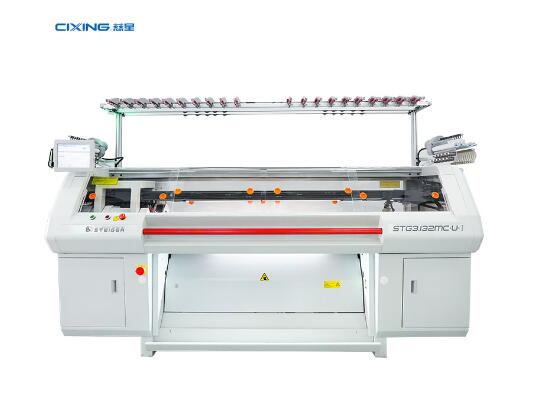Weaving Wonders: The Impact of Knitting Machine Choice on Fabric Characteristics
2023-12-20
Introduction:
In the intricate world of textile manufacturing, the choice of knitting machine is akin to selecting the artist's brush—each stroke contributing to the final masterpiece. The type of knitting machine employed plays a pivotal role in shaping the characteristics of the knitted fabric, influencing factors such as stretch, weight, and texture. In this blog post, we'll unravel the intricate relationship between knitting machine choice and the unique qualities that define knitted fabrics.
1. Circular Knitting Machines: Versatility in Seamless Creations:
- Circular knitting machines, as the name suggests, create fabrics in a seamless tubular form.
- The continuous looped structure imparts natural stretch to the fabric, making it well-suited for applications where elasticity is essential.
2. Flat Knitting Machines: Precision in Panel Production:
- Flat knitting machines produce fabrics in flat panels, which are later stitched together.
- The absence of seamless loops can result in fabrics with less inherent stretch compared to circular knits, providing a more controlled and stable feel.
3. Machine Gauge: The Fine Threads of Detail:
- Machine gauge refers to the density of needles per inch on the needle bed.
- Finer gauges, with more needles per inch, produce fabrics with finer details, smoother surfaces, and lighter weights.
4. Needle Selection: Crafting the Stitch Landscape:
- Different needle types contribute to the texture and appearance of the fabric.
- Selections such as latch needles, bearded needles, or compound needles influence the stitch patterns and overall texture of the knitted fabric.
5. Cam Systems and Stitch Variation:
- Cam systems control the movement of needles, guiding the formation of stitches.
- Different cam configurations allow for a variety of stitch patterns, influencing the overall texture and appearance of the fabric.
6. Yarn Tension Control: Balancing Stretch and Stability:
- Yarn tension control mechanisms ensure the consistent flow of yarn during the knitting process.
- Proper tension control is crucial for achieving the desired balance between stretchiness and fabric stability.
7. Sinker Systems: Shaping Fabric Structure:
- Sinker systems work in tandem with needles to shape and control the fabric structure.
- They play a role in determining the weight and drape of the knitted fabric.
8. Yarn Type and Fiber Content: The Thread's Personality:
- The type of yarn used, whether natural or synthetic, impacts the characteristics of the knitted fabric.
Conclusion: A Symphony of Choices:
The choice of knitting machine is a symphony of decisions, each note contributing to the composition of a unique fabric. From circular to flat machines, fine to large gauges, and intricate patterns to simple textures, every decision shapes the characteristics of the knitted fabric. As textile technology continues to advance, the palette of possibilities expands, allowing designers and manufacturers to weave wonders that cater to diverse needs and preferences. The magic lies in the hands of those who understand the harmonious interplay between knitting machine choices and the fabric characteristics they seek to create.



